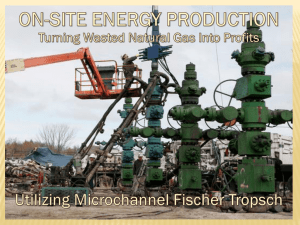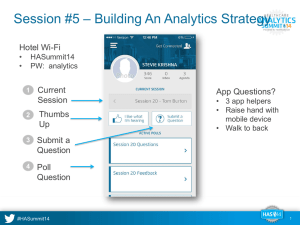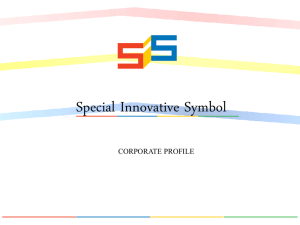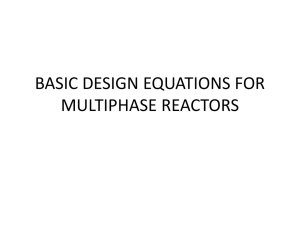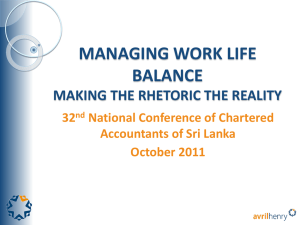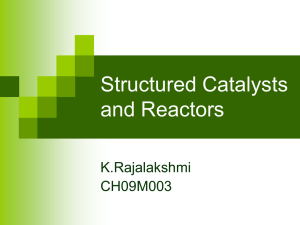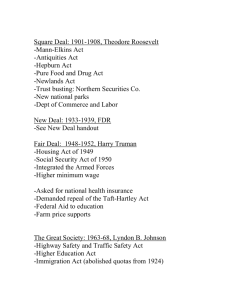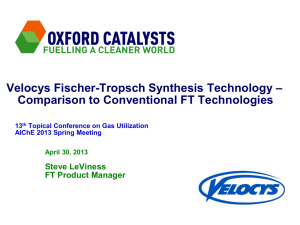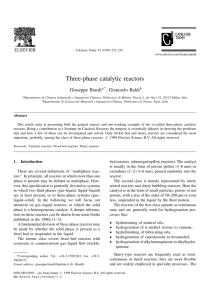Fischer-Tropsch - University of Maryland
advertisement
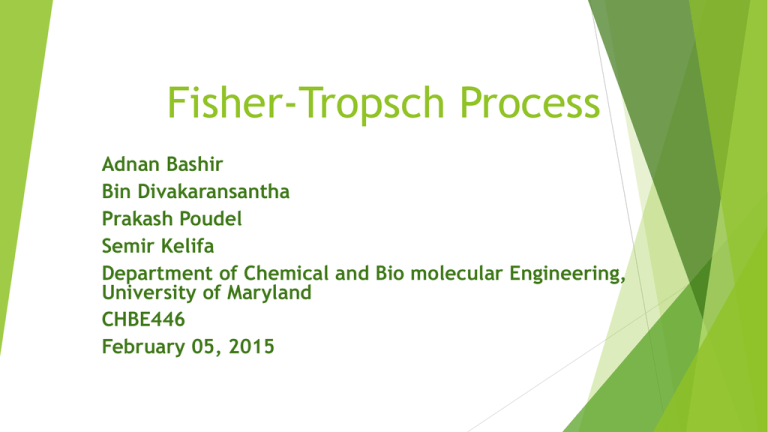
Fisher-Tropsch Process Adnan Bashir Bin Divakaransantha Prakash Poudel Semir Kelifa Department of Chemical and Bio molecular Engineering, University of Maryland CHBE446 February 05, 2015 Outline Intro/Historical Background Definition Reaction type/Mechanism Use/Industrial Importance Technology/Reactors Catalysis Conclusion History Sabatien & Senderens (1902) produced mixture of hydrocarbons Not favorable at the time No single product formed Priority given to methanol and ammonia History Cont. Fischer and Tropsch Used base catalyst like alkalized iron and produced “synthol” Temperature of about 400-450 Celsius and 150 atm Higher hydrogen to CO ratio produced better product Tested this fluid like substance in 1922 NSU motorbike Seated 2 people and outperformed reference fuel Catalyst video History Cont.. Tested this fluid like substance in 1922 NSU motorbike Seated 2 people and outperformed reference fuel Encouraging performance led to World War II fuel supply Fist plant made in Germany in 1934 By 1938 660,000 tons per-anum produced Source: http://wiredspace.wits.ac.za/jspui/bitstream/10539/11587/4/Chapter%202%20-%20Literature%20review%20-%20FTS.pdf Reaction steps Associative adsorption of CO and splitting of C/O bon Dissociative adsorption of 2H2 Transfer of 2H to the oxygen to yield H2O Desorption of H2O Transfer of 2H to the carbon to yield CH2 Main reactions Alkane formation 𝑛𝐶𝑂 + 2𝑛 + 1 𝐻2 → 𝐶𝑛 𝐻2𝑛+2 + 𝑛𝐻2 𝑂 Favored by high 𝐻2 /CO ratio Strong hydrogenating catalyst is needed. Alkene formation 𝑛𝐶𝑂 + 2𝑛𝐻2 → 𝐶𝑛 𝐻2𝑛 + 𝑛𝐻2 𝑂 Favored by low 𝐻2 /CO ratio . Less strong hydrogenating catalyst is needed. Main reactions cont.. Water-gas-shift reaction 𝐶𝑂 + 𝐻2 𝑂 → 𝐶𝑂2 + 𝐻2 WGS activity is high in iron catalyst and low in cobalt or ruthenium catalyst. Helpful to adjust 𝐻2 /CO ratio. Useful Products Source: http://large.stanford.edu/courses/2010/ph240/liu1/ Gas-to-liquids (GTL) Biomass-to-liquids (BTL) Coal to liquid (CTL) Can be used to produce I. Deiseal Fuel/Jet Fuel/Kerosene II. Waxes/Lubricants III. Naphtha/Gasoline/Detergent Technology/ Reactors Fixed Bed Reactors Originally used Challenges associated with removal of heat Fluidized Bed Reactors Better temperature control High yields for Gasoline and light products Source:http://www.altenergymag.com/emagazine/2014/02/india-sustainable-communities-proposal/2216 http://pubs.rsc.org/en/content/articlelanding/2015/cy/c4cy01547a#!divAbstract Technology cont.. Slurry Reactors Small catalyst particles suspended in a liquid with low vapor pressure Low Temperature Flexible design High yield for waxes Source:http://www.altenergymag.com/emagazine/2014/02/india-sustainable-communities-proposal/2216 Catalysis Based on Transition Metals Iron(Fe) -Low Cost -Higher Water Gas Shift activity -Suitable for lower syngas(H2/CO) Cobalt(Co) -More Active -Less Water Gas Shift activity -Higher Cost Source:http://periodictable.com/Elements/027/ Catalysis cont.. Nickel(Ni) -Promotes Methane formation -Generally not desired I. Ruthenium(Ru) High molecular weight Hydrocarbons High Cost Not generally used I. Source:http://periodictable.com/Elements/027/ Promoters Fe Based Catalysts - Promoted with Alkali metals -to obtain high basicity, and to stabilize catalyst -Higher alkali level higher the shift to longer chains -Addition of copper: Enhances reducibility Co Based Catalysts -promoted with small amounts of noble metals -reduces reduction temperature/pressure -yields less olefins and oxygenated products Cost Source: http://www.tc2.ch.tum.de/fileadmin/tuchtc2/www/ICP1/ICP1_1314/9-FT_synthesis- Conclusion Process developed by Fischer and Tropsch Many possibilities exist and it is still a research interest Useful for production of clean energy and the future of Biofuels Different reactor technologies for different desirable products Catalysts utilized based on need and cost Questions? Sources http://www.ebah.com.br/content/ABAAABOMcAL/fischer2013tropsch-catalysis-the-basis-for-anemerging-industry http://wiredspace.wits.ac.za/jspui/bitstream/10539/11587/4/Chapter%202%20%20Literature%20review%20-%20FTS.pdf http://en.wikipedia.org/wiki/Fischer%E2%80%93Tropsch_process http://large.stanford.edu/courses/2010/ph240/liu1/ http://www.velocys.com/our_products_processes_ft.php http://www.purdue.edu/discoverypark/energy/assets/pdfs/cctr/outreach/Basics1CoalGasification-Jun07.pdf http://www.bp.com/content/dam/bp/pdf/Technology/Fischer_Tropsch_Technology.pdf http://www.tc2.ch.tum.de/fileadmin/tuchtc2/www/ICP1/ICP1_1314/9-FT_synthesis-2013_PW.pdf http://www.biofuelsdigest.com/bdigest/2012/11/20/little-big-tech-can-fischer-tropsch-technologywork-at-smaller-scale/ http://en.wikipedia.org/wiki/Fischer%E2%80%93Tropsch_process http://www.netl.doe.gov/research/coal/energy-systems/gasification/gasifipedia/ftsynthesis http://www.tc2.ch.tum.de/fileadmin/tuchtc2/www/ICP1/ICP1_1314/9-FT_synthesis-2013_PW.pdf

